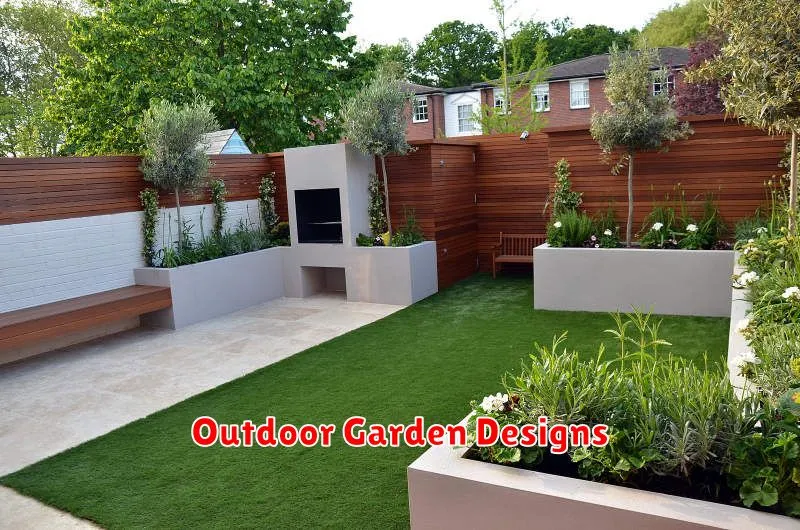Transform your home’s exterior with our curated selection of 10 Garden and Outdoor Space Designs. Whether you dream of a vibrant, flourishing garden, a serene and minimalist outdoor space, or a practical and stylish patio, this article offers inspiring ideas for every homeowner. Discover innovative designs for small and large yards, maximizing your space and creating the perfect outdoor oasis for relaxation, entertaining, or simply enjoying the beauty of nature. Explore diverse styles, from modern minimalist to rustic charm, to find the ideal design that reflects your personal aesthetic and elevates your home’s curb appeal. Let us help you create the outdoor space of your dreams.
Zen Japanese Garden
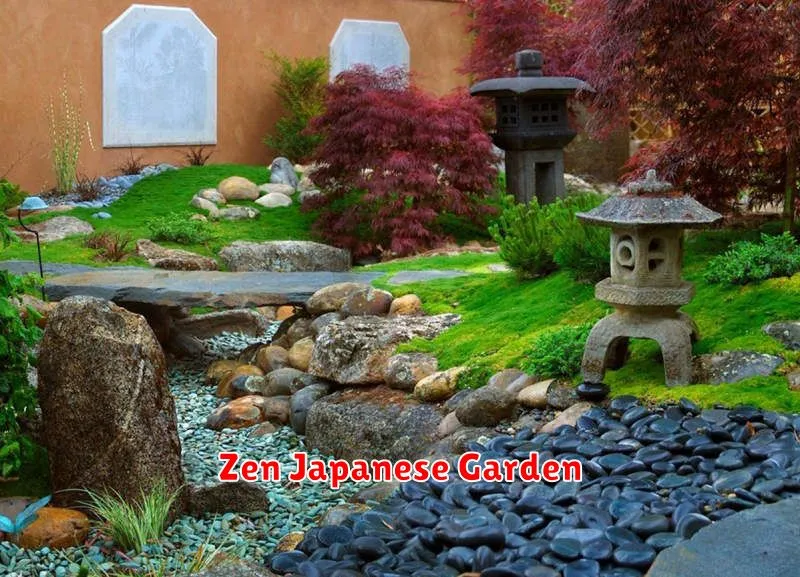
A Zen Japanese garden, also known as a rock garden or karesansui (枯山水), is a meticulously designed landscape that embodies the principles of Zen Buddhism. These gardens are not intended for recreational use in the traditional sense, but rather serve as a space for contemplation and meditation.
Minimalism is a key characteristic. They typically feature carefully arranged rocks, gravel, moss, and sometimes water features, all within a meticulously raked gravel bed. The arrangement of these elements is not arbitrary; it is carefully planned to evoke a sense of harmony and balance, representing natural landscapes in a stylized and symbolic manner.
The gravel itself often plays a central role, representing water, sand, or even the universe itself. The act of raking the gravel into intricate patterns is a form of meditation, a mindful practice that promotes tranquility and inner peace. The precise raking of the sand or gravel is not merely aesthetic; it is a process of constant renewal and reflection.
Rocks are another crucial component, often chosen for their size, shape, and color, and placed to represent specific elements or ideas. These may represent mountains, islands, or other natural formations. The careful placement of these rocks creates a sense of depth and perspective, prompting contemplation of the larger natural world.
The overall effect is one of serenity and simplicity, inviting the observer to slow down, focus on the present moment, and find inner peace. The absence of vibrant colors and ornate decorations emphasizes the spiritual essence of the garden. The viewer is encouraged to find their own meaning and connection within the carefully curated space.
Vertical Garden for Small Spaces
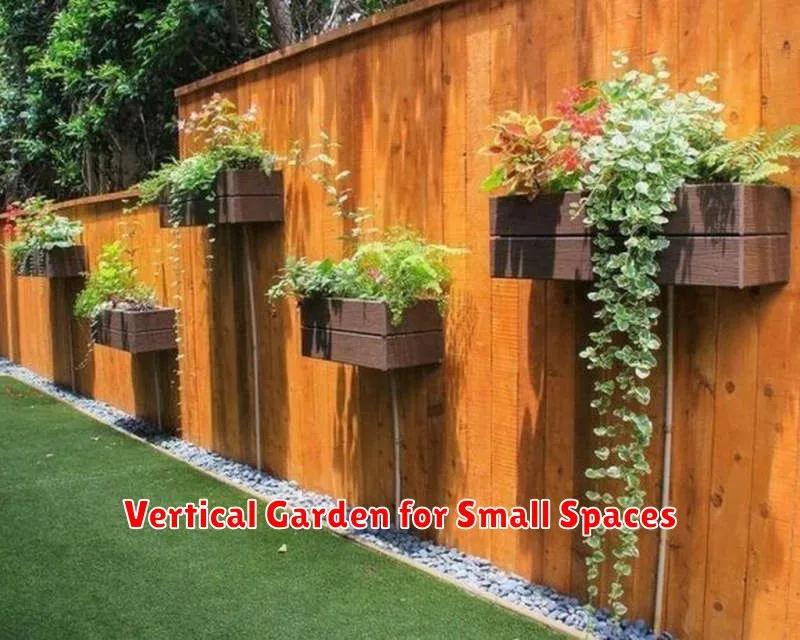
Vertical gardening is a space-saving solution perfect for apartment dwellers, balcony gardeners, or anyone with limited outdoor space. It maximizes the use of vertical surfaces, allowing you to grow a surprising amount of plants in a small footprint.
There are various methods for creating a vertical garden. DIY options abound, ranging from repurposed pallets and shelves to intricate wall-mounted systems. The choice depends on your budget, available space, and desired aesthetic.
Plant selection is crucial for success. Choose compact varieties that won’t outgrow their containers quickly. Herbs, strawberries, and trailing plants are excellent choices for vertical gardens. Consider the sunlight requirements of your chosen plants when selecting a location for your vertical garden.
Proper watering is essential to prevent overwatering or underwatering. Well-draining soil and containers with drainage holes are critical. Regularly check the moisture level of your soil, and adjust your watering schedule accordingly. Consider using a self-watering system for convenience and to minimize the risk of plant stress.
Maintenance involves regular pruning to maintain the shape and size of your plants. Check for pests and diseases regularly and take prompt action if needed. Fertilizing your plants will ensure their healthy growth. With consistent care, your vertical garden can thrive and provide you with fresh produce or beautiful blooms for months to come.
In conclusion, a vertical garden offers a fantastic opportunity to bring the beauty and bounty of nature into even the smallest of spaces. With careful planning and consistent care, you can enjoy a rewarding and productive gardening experience, regardless of your living situation. The benefits extend beyond the aesthetic appeal; vertical gardens can also contribute to a healthier and more relaxing home environment.
Rustic Outdoor Patio
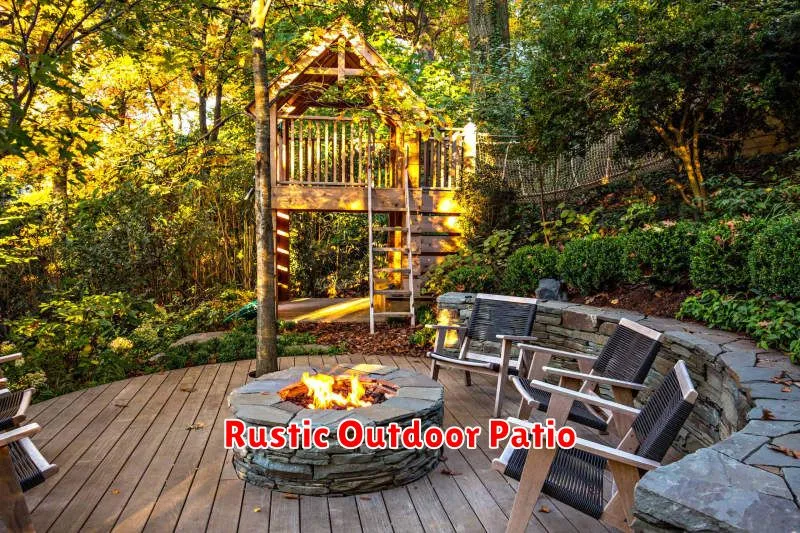
Creating a rustic outdoor patio offers a unique blend of comfort and natural beauty. The key lies in selecting the right materials and design elements to evoke a sense of warmth and charm.
Natural materials are paramount. Consider using reclaimed wood for furniture, such as a weathered wooden dining table and chairs, or even a repurposed pallet coffee table. Stone, particularly flagstone or natural slate, makes an excellent choice for paving, providing a rugged yet elegant surface. For a touch of elegance, consider incorporating elements of wrought iron, such as decorative fencing or plant stands.
The color palette should reflect the natural surroundings. Earthy tones, such as browns, greens, and creams, create a harmonious and inviting atmosphere. You can incorporate pops of color with outdoor cushions and throws in muted patterns or solid hues. Consider using natural fibers such as linen or cotton for textiles to enhance the rustic aesthetic.
Lighting plays a crucial role in setting the mood. String lights draped across the patio create a magical ambiance, perfect for evening gatherings. Alternatively, strategically placed lanterns or outdoor sconces can add both functionality and charm. Opt for warm-toned lighting to amplify the cozy, rustic feel.
Plants and greenery are essential components for completing the rustic look. Potted herbs, flowering plants, and climbing vines can add texture and visual interest. A strategically placed vertical garden can further enhance the natural aesthetic. Remember to choose plants that are well-suited to your climate and location.
Finally, incorporating personal touches makes the space uniquely yours. Consider adding vintage décor pieces, such as old watering cans or rustic planters. Family heirlooms or handcrafted items add character and warmth, reflecting your individual style and creating a truly inviting space.
Tropical Plant Selection
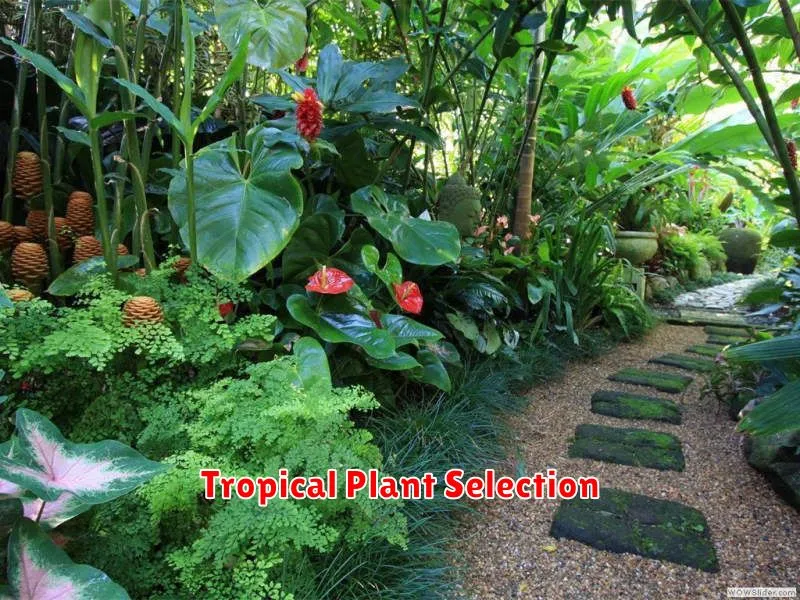
Selecting the right tropical plants for your environment requires careful consideration of several key factors. Understanding your specific climate, soil type, and available sunlight is crucial for ensuring the health and longevity of your chosen specimens.
Climate plays a dominant role. The average temperature, humidity levels, and frequency of rainfall will directly impact plant survival. Some tropical plants thrive in consistently warm and humid conditions, while others might tolerate slightly cooler temperatures or drier periods. Researching the specific needs of each plant before purchase is essential.
Soil composition is another important consideration. Well-draining soil is often preferred to prevent root rot, a common issue for many tropical species. The soil’s pH level also impacts nutrient uptake, so understanding your soil’s properties and amending it accordingly can significantly improve plant health.
Sunlight exposure varies greatly depending on location and the time of year. Some tropical plants require full sun, while others prefer partial shade or even full shade. Incorrect sunlight exposure can lead to leaf burn, stunted growth, or even plant death. Carefully observe the available sunlight in your chosen planting area.
Finally, plant size and maturity at the time of purchase should be taken into account. Larger, more mature plants generally have a higher survival rate, but they also demand more space and resources. Smaller plants offer a cost-effective option, but require more diligent care during their establishment phase.
By considering these factors – climate, soil, sunlight, and plant size – you can significantly increase your chances of success when selecting and maintaining tropical plants in your landscape.
Compact Balcony Gardens
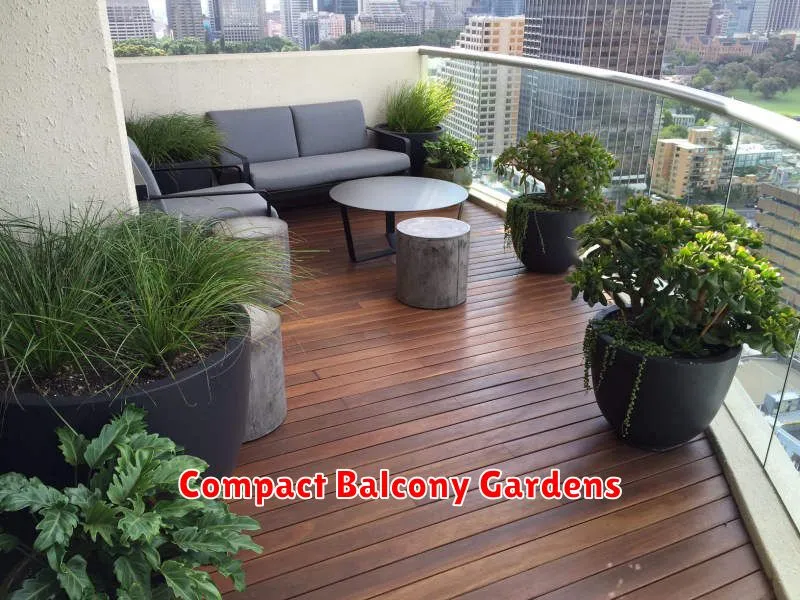
Transforming a small balcony into a vibrant garden is entirely achievable with careful planning and the right selection of plants. Space optimization is key. Consider using vertical gardening techniques like wall-mounted planters or hanging baskets to maximize the available area. This allows you to grow a surprising amount of greenery, even in a limited space.
Plant choice is crucial for success. Opt for compact varieties of your favorite plants. Dwarf fruit trees, trailing herbs, and smaller flowering plants will thrive in containers and won’t outgrow their space. Research the specific needs of each plant regarding sunlight and watering to ensure they flourish in your balcony’s microclimate.
Container selection impacts both aesthetics and plant health. Choose lightweight yet durable pots that are appropriately sized for your chosen plants. Consider using a variety of sizes and colors to create visual interest. Ensure the pots have adequate drainage holes to prevent root rot, a common problem in container gardening.
Maintenance is simplified by using self-watering containers or implementing a regular watering schedule. Remember to fertilize your plants regularly to provide them with the nutrients they need to thrive. Regular pruning will help maintain the shape and size of your plants, preventing them from becoming overgrown and unwieldy.
With a little creativity and effort, even the smallest balcony can become a beautiful and productive garden. Enjoy the rewards of fresh herbs, colorful flowers, or even miniature fruits and vegetables, all grown in your own personal oasis. The sense of accomplishment and the beauty of your compact balcony garden will be well worth the effort.
Modern Outdoor Seating
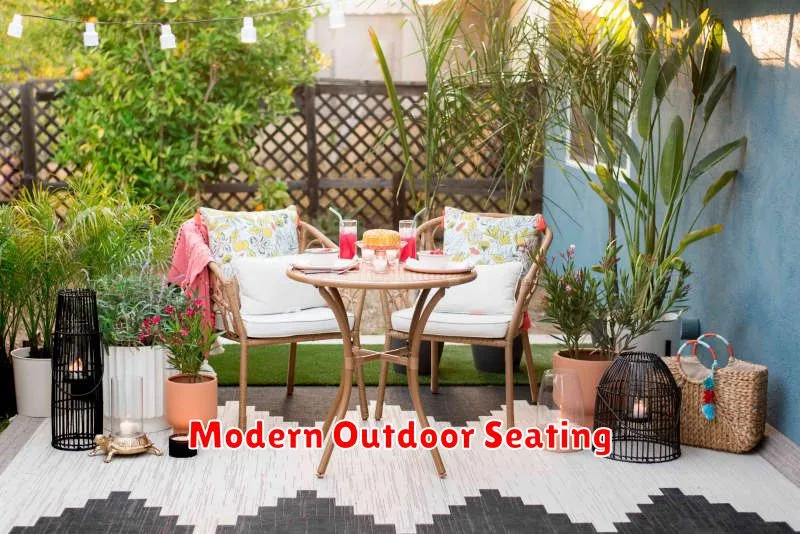
Choosing the right outdoor seating can significantly enhance your patio, deck, or garden space. Comfort and style are key considerations, but you also need to think about durability and maintenance.
Materials play a crucial role. Popular choices include weather-resistant wicker, powder-coated aluminum, and durable teak wood. Wicker offers a relaxed, inviting aesthetic, while aluminum provides lightweight, low-maintenance seating. Teak, known for its strength and natural beauty, requires minimal upkeep but demands a higher initial investment.
Consider the size and shape of your outdoor area. Modular seating offers flexibility, allowing you to configure pieces to suit your space and needs. Larger pieces, like sectionals, are perfect for creating a comfortable lounge area, while individual chairs provide more seating options for gatherings.
Cushions can add both comfort and style. Look for weather-resistant fabrics designed to withstand the elements. Quick-drying materials are especially important, preventing mold and mildew buildup. Remember to store cushions indoors when not in use to prolong their lifespan.
Style is a matter of personal preference. Modern designs often feature clean lines and minimalist aesthetics, while more traditional styles incorporate intricate details and ornate patterns. Choose a style that complements your existing outdoor decor and reflects your personal taste.
Finally, think about your budget. Outdoor furniture prices range widely, depending on materials, style, and features. Setting a budget beforehand can help you narrow down your choices and find the perfect seating to create your ideal outdoor oasis.
DIY Herb Gardens
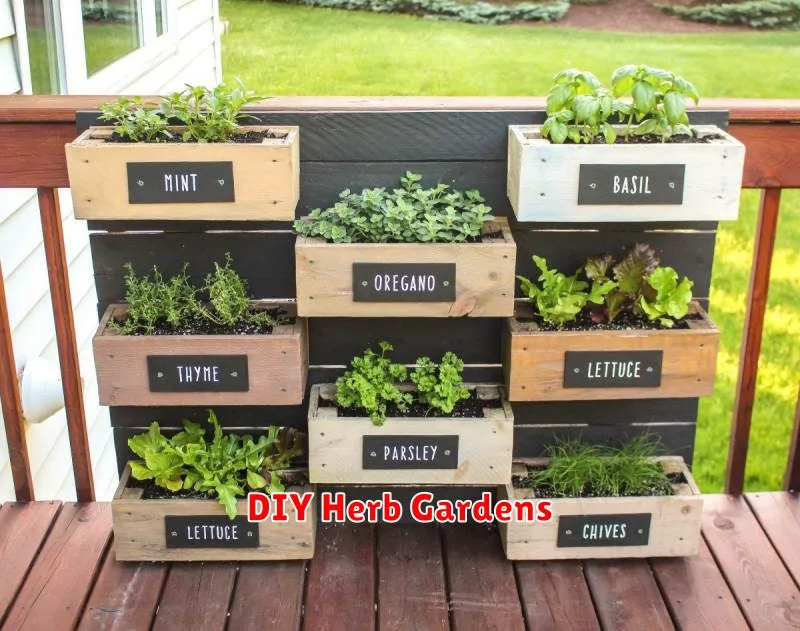
Creating your own herb garden is a rewarding experience, offering fresh, flavorful herbs for cooking and a beautiful addition to your home or yard. Whether you have a large outdoor space or a small apartment balcony, there’s a DIY herb garden solution for you.
Choosing the right herbs is the first step. Consider which herbs you use most frequently in your cooking. Popular choices include basil, rosemary, thyme, oregano, mint, and chives. Research the specific needs of each herb—some prefer full sun, while others thrive in partial shade. Consider the climate in your area when making your selection.
Container gardening is a fantastic option for those with limited space. Use pots, planters, or even repurposed containers such as old watering cans or teacups. Ensure your containers have adequate drainage to prevent root rot. Well-draining potting mix is also crucial for healthy herb growth.
For those with outdoor space, a dedicated herb garden bed can be a beautiful focal point. Prepare the soil by amending it with compost to improve drainage and fertility. Spacing your herbs appropriately is important to allow for proper growth and air circulation. Remember to water regularly, especially during dry spells.
Maintaining your herb garden involves regular watering, weeding, and fertilizing. Harvesting your herbs regularly will encourage bushier growth. Pruning some herbs, such as basil, can also help promote bushier growth and prevent flowering. Remember to research the specific care instructions for your chosen herbs.
With a little planning and effort, you can enjoy the benefits of a thriving DIY herb garden. The fresh herbs will enhance your cooking, and the process itself is a rewarding and enjoyable experience. Happy gardening!
Wildflower Garden for Relaxation
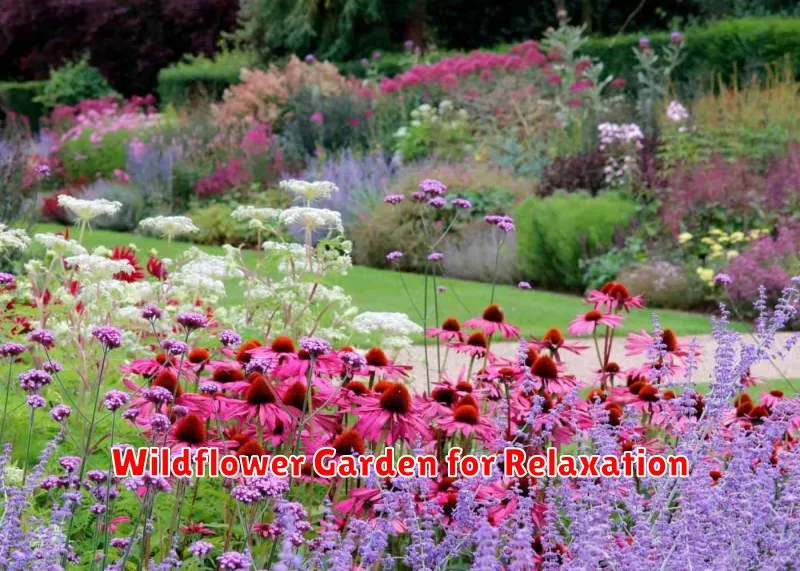
Creating a wildflower garden is a fantastic way to boost your relaxation and enjoy the beauty of nature. The vibrant colors and diverse textures offer a captivating visual experience, perfect for unwinding after a long day.
The low-maintenance aspect of a wildflower garden is a major draw for those seeking a tranquil escape without the demands of constant upkeep. Unlike meticulously manicured gardens, wildflowers thrive with minimal intervention, allowing you to simply enjoy their natural charm.
Biodiversity is another key benefit. Wildflower gardens attract a variety of pollinators such as bees and butterflies, creating a lively and buzzing ecosystem within your own backyard. This contributes to a sense of peace and connection with the natural world.
Consider the location carefully when planning your wildflower garden. Choose a sunny spot with well-drained soil for optimal growth. The size can be tailored to your available space, from a small patch to a sprawling meadow.
Selecting the right wildflower seeds is crucial. Research native species that are best suited to your climate and soil conditions. This will ensure a thriving and sustainable garden that requires minimal effort.
Once established, your wildflower garden will provide a continuous source of aesthetic pleasure and a haven for relaxation throughout the growing season. The gentle sway of the flowers in the breeze, the vibrant colors, and the hum of pollinators combine to create a truly serene environment.
In conclusion, a wildflower garden is more than just a beautiful landscape; it’s a sanctuary for relaxation and a connection to the natural world. Its low-maintenance nature and abundance of life make it an ideal choice for anyone seeking a peaceful and rewarding gardening experience.
Eco-Friendly Sustainable Setup
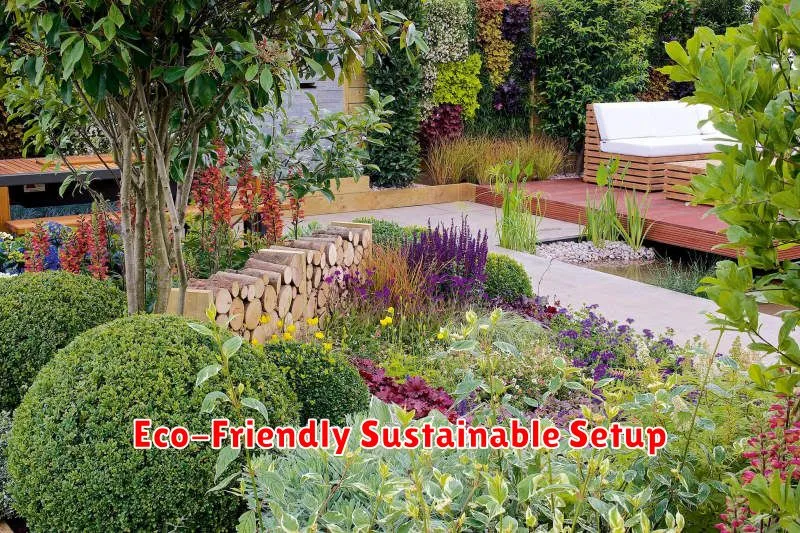
Creating an eco-friendly and sustainable home setup requires a conscious effort to minimize your environmental impact. It’s about making choices that benefit both your well-being and the planet.
Energy efficiency is key. Consider switching to LED lighting, which uses significantly less energy than incandescent bulbs. Investing in energy-efficient appliances, identified by their Energy Star rating, will also reduce your carbon footprint over time. Remember to unplug electronics when not in use to prevent phantom energy drain.
Water conservation is equally important. Install low-flow showerheads and toilets to reduce water consumption. Fix any leaks promptly and consider collecting rainwater for gardening purposes. Being mindful of your water usage in daily activities makes a significant difference.
Reducing, reusing, and recycling (the 3 Rs) are fundamental principles of sustainable living. Minimize waste by buying products with minimal packaging, opting for reusable alternatives like shopping bags and water bottles, and diligently sorting your waste for recycling.
Sustainable materials are crucial in creating an eco-conscious home. Choose furniture and decor made from recycled or sustainably sourced materials. Bamboo, reclaimed wood, and organic cotton are excellent options. Support businesses committed to ethical and environmentally responsible practices.
Beyond the tangible aspects, consider adopting sustainable lifestyle choices. This includes reducing your consumption, supporting local farmers markets for fresh produce, and minimizing your carbon footprint through conscious transportation choices like biking, walking, or using public transport.
Creating a truly sustainable home is an ongoing journey, not a destination. By incorporating these eco-friendly practices, you’ll contribute to a healthier planet and enjoy a more mindful and fulfilling lifestyle. Start small, make gradual changes, and celebrate your progress along the way!
Mediterranean Inspired Courtyard
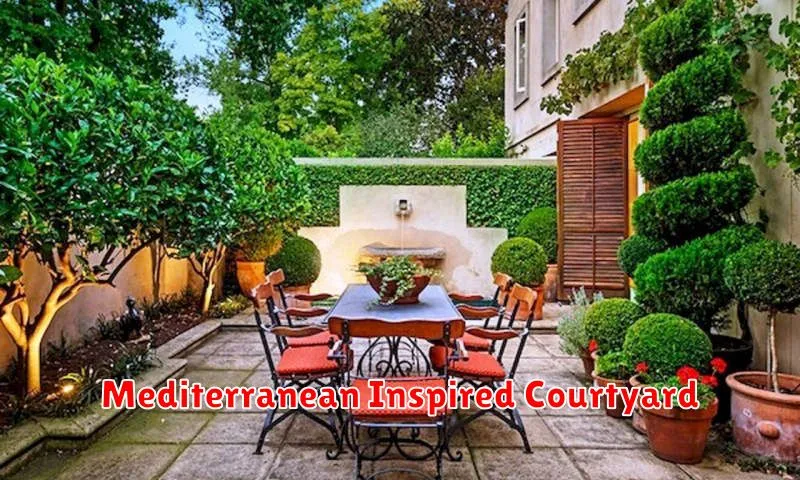
Transform your outdoor space into a tranquil Mediterranean oasis with careful planning and design. A key element is incorporating the region’s signature architectural style and planting choices.
Color palettes should reflect the sun-drenched landscape. Think warm, earthy tones like terracotta, ochre, and sandy beige. These hues can be incorporated through paving, wall finishes, and even furniture choices. Accents of bright, vibrant colors like cobalt blue or sunny yellow can add a touch of playful energy.
Materials play a crucial role in achieving an authentic Mediterranean feel. Natural materials such as stone, terracotta tiles, and wood are essential. Consider using weathered stone for walls and pathways, creating a sense of age and character. Terracotta pots overflowing with fragrant herbs and flowering plants further enhance the ambiance.
Plants are integral to a Mediterranean courtyard. Choose drought-tolerant species like olive trees, bougainvillea, lavender, and rosemary. These plants not only thrive in warmer climates, but their textures and aromas add layers of sensory richness. Consider creating different planting zones to maximize space and visual interest.
Water features, whether a small fountain or a simple birdbath, can add a soothing element to the design. The gentle sound of flowing water creates a peaceful atmosphere, enhancing the overall tranquil feel of the courtyard. Strategic placement of seating areas allows for comfortable relaxation and enjoyment of the space.
Finally, consider incorporating architectural details reminiscent of Mediterranean design. Arches, trellises, and wrought-iron accents can add depth and visual interest. These elements not only enhance the aesthetics but also provide shade and functional elements within the courtyard.

